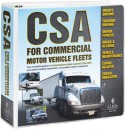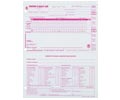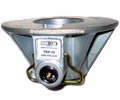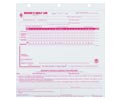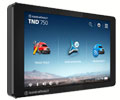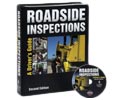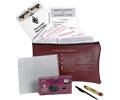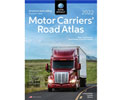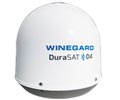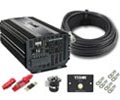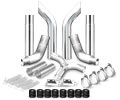DOT Alcohol and Drug Testing
DOT alcohol and drug testing can be one of those areas that trip up a motor carrier, especially an owner-operator who does not have the advantage of a support staff. If there is not a clear understanding of the Federal Motor Carrier Safety Regulations (FMCSRs), violations can result in fines and penalties.
Who is subject to Part 382?
It is important to understand applicability to DOT alcohol and drug testing requirements (Part 382). It is based on the vehicle operated.
Anyone operating or in readiness to operate the following vehicle as defined in 49 CFR Section 383.5 is a driver for Part 382 purposes:
"Commercial motor vehicle (CMV) means a motor vehicle or combination of motor vehicles used in commerce to transport passengers or property if the motor vehicle-
(a) Has a gross combination weight rating of 11,794 kilograms or more (26,001 pounds or more) inclusive of a towed unit(s) with a gross vehicle weight rating of more than 4,536 kilograms (10,000 pounds); or
(b) Has a gross vehicle weight rating of 11,794 or more kilograms (26,001 pounds or more); or
(c) Is designed to transport 16 or more passengers, including the driver; or
(d) Is of any size and is used in the transportation of hazardous materials as defined in this section."
It is important to note that a driver who holds a CDL, but does not utilize it, does not meet the criteria for DOT random testing. Applicability is based on the operation of the above vehicle, not the licensing of the driver, although the driver would have to hold a CDL to operate the above CMV. For example, a driver who holds a CDL but just drives a small box truck (10,001 pounds or more but less than 26,001 pounds with no hazmat) is not subject to CDL licensing requirements while in operation of this vehicle nor DOT alcohol and drug testing.
Note: Operation in interstate commerce of a non-CDL type of vehicle fitting within the confines of the CMV definition in 49 CFR Section 390.5 would place a driver under other parts of the FMCSR such as hours of service, vehicle inspection and maintenance, vehicle markings, operating authority, and DQ files. Intrastate carriers would have to check state-specific requirements for these areas of the regulations.
What are the DOT test types?
Now that you understand who must be tested, let’s move on to the types of tests required. According to 49 CFR Part 382, Subpart C, there are six specific tests for drivers. They include:
- Pre-employment drug (§382.301);
- Post-accident alcohol and drug (§382.303);
- Random drug and/or alcohol (§382.305);
- Reasonable suspicion drug and/or alcohol (§382.307);
- Return-to-duty alcohol and/or drug (§382.309); and
- Follow-up drug and/or alcohol (§382.311)
Each of these requires the collection of a urine sample that is tested for the following controlled substances:
- Marijuana metabolites.
- Cocaine metabolites.
- Amphetamines.
- Opiate metabolites.
- Phencyclidine (PCP).
Motor carriers, including owner-operators, are expected to follow the recordkeeping requirements set forth in Part 382 and present the alcohol and drug testing program documents, including test results, to the Federal Motor Carrier Safety Administration (FMCSA) in the event of an audit.
What are the consequences of a DOT drug or alcohol violation?
The consequences of testing positive on or refusing a DOT-required test are the same whether you are your own boss or not. You must immediately cease from operating a CMV as defined in §383.5. You are also prohibited from operating a CMV as defined in §390.5, which includes non-CDL vehicles.
In order to operate a CMV again, under your authority or anyone else’s, you must undergo the DOT Return-to-Duty Process. This means you must see a Substance Abuse Professional (SAP) and undergo a face-to-face evaluation. The SAP will prescribe treatment that you would have to complete satisfactorily based on the SAP's second face-to-face evaluation. Once the SAP is convinced that the treatment was successful, he or she will issue a SAP report. The issuance of this SAP report allows you to go for a DOT return-to-duty drug and/or alcohol test. Once the results are back and negative, a driver may resume operation of a CMV. However, the process is not completely over until the very last prescribed DOT follow-up test is conducted.
How does an owner-operator start a DOT testing program?
With only one driver, how can an owner-operator comply with the DOT testing requirements? According to the FMCSRs, a random pool must consist of at least two drivers. Because of this, an owner-operator as a sole driver would be expected to join a consortium.
A consortium is managed by a third-party administrator who combines the names of owner-operators and/or small carriers to create a larger sampling of driver names from which to draw for random tests. Some consortiums will make arrangements for the use a specific collection site and even assist with the printing of chains of custody and acquiring lab kits. Some consortiums manage the actual physical DOT testing file by retaining chains of custody and results for all test types, making them available to the motor carrier within 48 hours in the event of an audit. Your contract would dictate to what degree this third-party manages the program.
An owner-operator would also have to set up a business relationship with an HHS-approved lab. This lab account will track DOT tests conducted under your authority for billing and statistical purposes. You would receive lab summaries showing all of the tests conducted by your carrier and the results. This includes all tests (not just random tests) that your motor carrier performed. This is important because this demonstrates DOT compliance in the event of an audit. The summary also validates the random tests your consortium said should have been done.
How does the random testing work for an owner-operator?
When the random selection is made under the administration of the consortium, the owner-operator will be notified if he or she is selected. The owner-operator must proceed immediately to the testing facility. To wait or go at a later date is a violation and deemed a refusal to be tested. The consortium would include this as a refusal to be tested in its records if the owner-operator does not go for testing when notified. This holds the same consequences as a positive.
How is training handled?
An owner-operator is required to review the educational materials containing the elements in §382.601. He or she must sign a receipt of information and store it as a part of his or her recordkeeping. It may seem unusual since you are acting as both employer and employee in this situation, but the FMCSA does not exempt owner-operators from this recordkeeping requirement.
The owner-operator, on the other hand, is not required to have supervisor reasonable suspicion training. Obviously, you are not going to observe and send yourself for a reasonable suspicion test.
How does compliance work while under someone else’s authority?
An owner-operator must be in a consortium for compliance under its own authority. If leased out and working under someone else, the carrier is expected to participate in the leasing carrier’s random testing program. You are defined as an "employee"
for DOT purposes, even though you are your own business and have title of the vehicle being operated. The DOT does not look at the issue of pay or IRS status (employee versus contractor). The FMCSA requires drivers to be in as many random testing programs as "employed." This means an owner-operator could feasibly be in quite a few — the consortium plus all motor carriers' programs that he or she leases with.
The regulations require carriers utilizing owner-operators to leave their names in the pool for as long as they are expected to be utilized, even if this is occasionally. If you have an on-going relationship with regular customers (other carriers), they are obligated to keep you in their pool. An owner-operator has the potential to have his or her name selected for a random test by each "employer" and tested the next time he or she works for them.
Keep in mind that you will need to list your own consortium participation plus each carrier under whose authority you operated for the background check under the Safety Performance History contained in 49 CFR Section 391.23. The leasing carrier will be responding based on records retained on you under their safety program. All of your tests conducted under someone else’s program, such as DOT post-accident, random, or pre-employment tests, will appear on the leasing carrier’s lab summary and contained in its recordkeeping.
Even though, as noted earlier, the owner-operator is given a break in the supervisor reasonable suspicion training requirement, he or she is not absolved from reasonable suspicion testing while working under someone else’s authority. The leasing carrier’s supervisor, who is trained in accordance with §382.603, could feasibly document and send an owner-operator for a reasonable suspicion test under its testing program. If an owner-operator says 'no,' this is a refusal to be tested and holds the same consequences as a positive.
Back to » Top | Resource Center | What Owner-Operators Need To Know?



